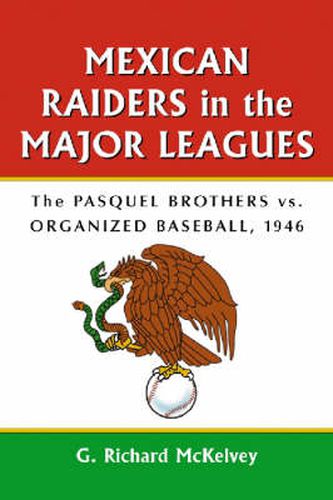Readings Newsletter
Become a Readings Member to make your shopping experience even easier.
Sign in or sign up for free!
You’re not far away from qualifying for FREE standard shipping within Australia
You’ve qualified for FREE standard shipping within Australia
The cart is loading…






This title is printed to order. This book may have been self-published. If so, we cannot guarantee the quality of the content. In the main most books will have gone through the editing process however some may not. We therefore suggest that you be aware of this before ordering this book. If in doubt check either the author or publisher’s details as we are unable to accept any returns unless they are faulty. Please contact us if you have any questions.
In 1946, American baseball was a shadow of its former self. The country had come through a devastating depression and then a world war. Attendance had spiralled down, stars had gone off to war and come home, and management was at odds with players. Though organized baseball had set about recovering its former strength and popularity, the stage was set for recruiters to steal away dissatisfied players. That’s just what the five Pasquel brothers from Mexico did. Armed with promises of wealth and stardom, the Pasquels recruited 23 players away from American teams. For most of them, it was the beginning of the end of their careers. Mexican baseball wasn’t the picture the Pasquels painted and the players were not given a cheerful welcome home. This book tells the story of the 1946 exodus to Mexican baseball, setting the stage with chapters on change and war in the U.S., player-management issues that clouded baseball’s recovery, and a history of the Mexican outlaw league. It describes the Pasquels’ move on organized baseball, including details of those who did not take the offer to play for them. The author reveals what life was like for defectors who played in substandard ballparks, suffered from gastric disturbances and were targets of retribution from home. Chapters then delve into the stories of 23 players who took their bats and gloves south of the border in 1946. The author unravels lawsuits that followed the players’ five-year ban from American baseball, and concludes with the career outcomes for players after they returned home.
$9.00 standard shipping within Australia
FREE standard shipping within Australia for orders over $100.00
Express & International shipping calculated at checkout
This title is printed to order. This book may have been self-published. If so, we cannot guarantee the quality of the content. In the main most books will have gone through the editing process however some may not. We therefore suggest that you be aware of this before ordering this book. If in doubt check either the author or publisher’s details as we are unable to accept any returns unless they are faulty. Please contact us if you have any questions.
In 1946, American baseball was a shadow of its former self. The country had come through a devastating depression and then a world war. Attendance had spiralled down, stars had gone off to war and come home, and management was at odds with players. Though organized baseball had set about recovering its former strength and popularity, the stage was set for recruiters to steal away dissatisfied players. That’s just what the five Pasquel brothers from Mexico did. Armed with promises of wealth and stardom, the Pasquels recruited 23 players away from American teams. For most of them, it was the beginning of the end of their careers. Mexican baseball wasn’t the picture the Pasquels painted and the players were not given a cheerful welcome home. This book tells the story of the 1946 exodus to Mexican baseball, setting the stage with chapters on change and war in the U.S., player-management issues that clouded baseball’s recovery, and a history of the Mexican outlaw league. It describes the Pasquels’ move on organized baseball, including details of those who did not take the offer to play for them. The author reveals what life was like for defectors who played in substandard ballparks, suffered from gastric disturbances and were targets of retribution from home. Chapters then delve into the stories of 23 players who took their bats and gloves south of the border in 1946. The author unravels lawsuits that followed the players’ five-year ban from American baseball, and concludes with the career outcomes for players after they returned home.